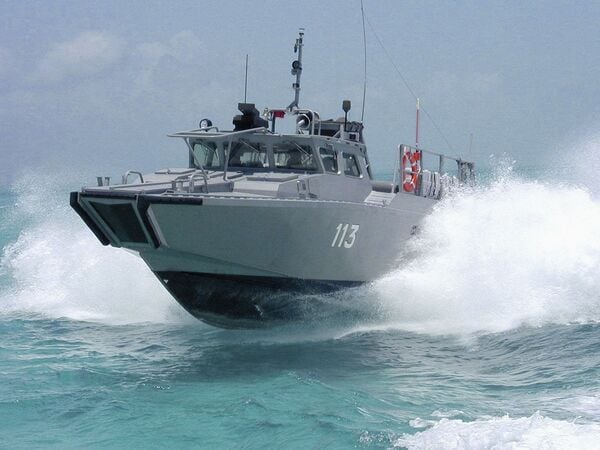- About
- Intara
- Capabilities
- Advisory
- Resources
- News
- Store
US lawmakers reach deal on Ukraine aid, FY 2022 defence funding
10 March 2022
by Marc Selinger


The US Capitol building in Washington, DC. (Marc Selinger/Janes)
US congressional negotiators have agreed on a funding bill that contains USD782 billion for fiscal year (FY) 2022 defence programmes, up 5.6% from FY 2021, and USD13.6 billion in Ukraine-related security, humanitarian, and economic assistance.
“This compromise legislation will enable us to invest in military modernisation to keep pace with Russia and China and urgently deliver the emergency aid that the brave people of Ukraine desperately need,” said Senate Minority Leader Mitch McConnell, a Kentucky Republican.
The bill, which was released publicly on 9 March, would give the US Department of Defense (DoD) USD144.9 billion for procurement, which is USD12.4 billion more than the Biden administration's request and USD8.4 billion more than the FY 2021 enacted level.
While fully funding the request for 85 Lockheed Martin F-35 Lightning II fighters, 14 Boeing KC-46A Pegasus tankers, and 12 Boeing F-15EX fighters, the legislation adds 20 Lockheed Martin C-130J Super Hercules transport planes, four Bell Boeing V-22 Osprey tilt-rotor aircraft, and two Lockheed Martin CH-53K King Stallion heavy-lift helicopters to the request. It also adds money for shipbuilding and several ground vehicle programmes.
The bill would give the DoD USD119.2 billion for research and development, which is USD7.2 billion more than the request, and USD256.3 billion for operation and maintenance, which is USD2.6 billion more than the request.
The defence funding is part of a broader USD1.5 trillion “omnibus” government funding bill for FY 2022, almost half of which is for non-defence programmes. The Ukraine aid, which is attached, includes USD3 billion to support US troop deployments in Eastern Europe and USD3.5 billion to replenish US stocks of equipment sent to Ukraine.
“This bill responds to Russia's unprovoked war of aggression, a vicious invasion of Ukraine,” said Rosa DeLauro, a Connecticut Democrat who chairs the House Appropriations Committee.
“We have to use everything at our disposal” to help Ukraine defend itself, said House Speaker Nancy Pelosi, a California Democrat.
However, the bill denies the USD3.3 billion request to train and arm Afghan security forces, which the administration submitted before the Afghan government collapsed in 2021.
The full House of Representatives approved the bill late on 9 March, sending it to the full Senate for its consideration. The White House Office of Management and Budget said that “the administration strongly urges swift passage” of the legislation so that President Joe Biden can sign it into law.
Since FY 2022 began on 1 October 2021, the government has been funded by a series of temporary measures, the latest of which runs up to 11 March. Congress plans to extend that date to 15 March to ensure it has enough time to pass the omnibus.
Congress continues to question US Navy decision to cut Virginia-class submarine
02 May 2024
by Michael Fabey


US lawmakers are criticising the US Navy's decision to cut a Virginia-class submarine, similar to the one shown here, from the recent budget request. (Janes/Michael Fabey)
US lawmakers are continuing to question the US Navy (USN) fiscal year (FY) 2025 budget request that cuts a Virginia-class attack submarine (SSN) from its funding proposal.
Initially, the USN had planned for two Virginias for the fiscal year, but now the service is asking for only a single submarine in the FY 2025 request submitted earlier in 2024.
In recent hearings on the budget US lawmakers have criticised the Virginia submarine cut.
Washington State Congressman Adam Smith, the ranking member of the House Armed Services Committee (HASC), continued the criticism on 1 May during a HASC hearing on the USN FY 2025 budget request.
Poland orders second batch of Chunmoo MRLs
29 April 2024
by Nicholas Fiorenza


The AA signed a second executive contract with Hanwha on 25 April for 72 K239 Chunmoo MRLs (pictured), several thousands of missiles, and technology transfer. (Hanwha Aerospace)
The Polish Armaments Agency (AA) signed a second executive contract with Hanwha Aerospace for 72 K239 Chunmoo multiple rocket launchers (MRLs) on 25 April, the Polish Ministry of National Defence (MND) and the South Korean company announced the same day. The USD1.6 billion contract also covers the delivery of several thousands of missiles with ranges of 80–290 km, including the 600 mm CTM290, and technology transfer.
The Polish MND said on its website that it expected the contract to have a significant impact on the development of the Polish defence industry, with the technologies acquired allowing the establishment of a capability to carry out repairs and modernisation, as well as produce spare parts for the MRLs and launch pods for 122 mm rockets produced by MESKO, part of Polska Grupa Zbrojeniowa (PGZ).
Saab's Skapa initiative aims to speed technology into customers' hands
24 April 2024
by Jeremiah Cushman


Saab has developed an autonomy package for its CB 90 fast boat and demonstrated its ability to navigate the Swedish coast. Pictured above is a CB 90 that was delivered to Malaysia. (Dockstavarvet)
Saab has established a new business function to revamp how it develops and delivers products to meet changing customer requirements. Skapa, a Swedish word that means “to create, to make, or to shape”, will focus on solving customer and stakeholder problems at speed, Erik Smith, president and CEO of Saab in the United States, told reporters on 23 April. “Skapa will accelerate the development and deployment of cutting-edge solutions to our warfighters” at pace, he said.
US congressional negotiators have agreed on a funding bill that contains USD782 billion for fiscal y...
Latest Podcasts
Using OSINT to support law enforcement
Ritu Gill, Intelligence Analyst, joins Harry and Sean to discuss the practical use of OSINT to support law enforcement. Ritu discusses it’s use in supporting risk assessments and classified or closed sources of intelligence. She also discusses t...
Listen nowJanes Case Studies
Using Janes Intara to build a common intelligence picture: Russian build up on the Ukrainian border
View Case StudyNews Categories
 Industry Details
Industry Details